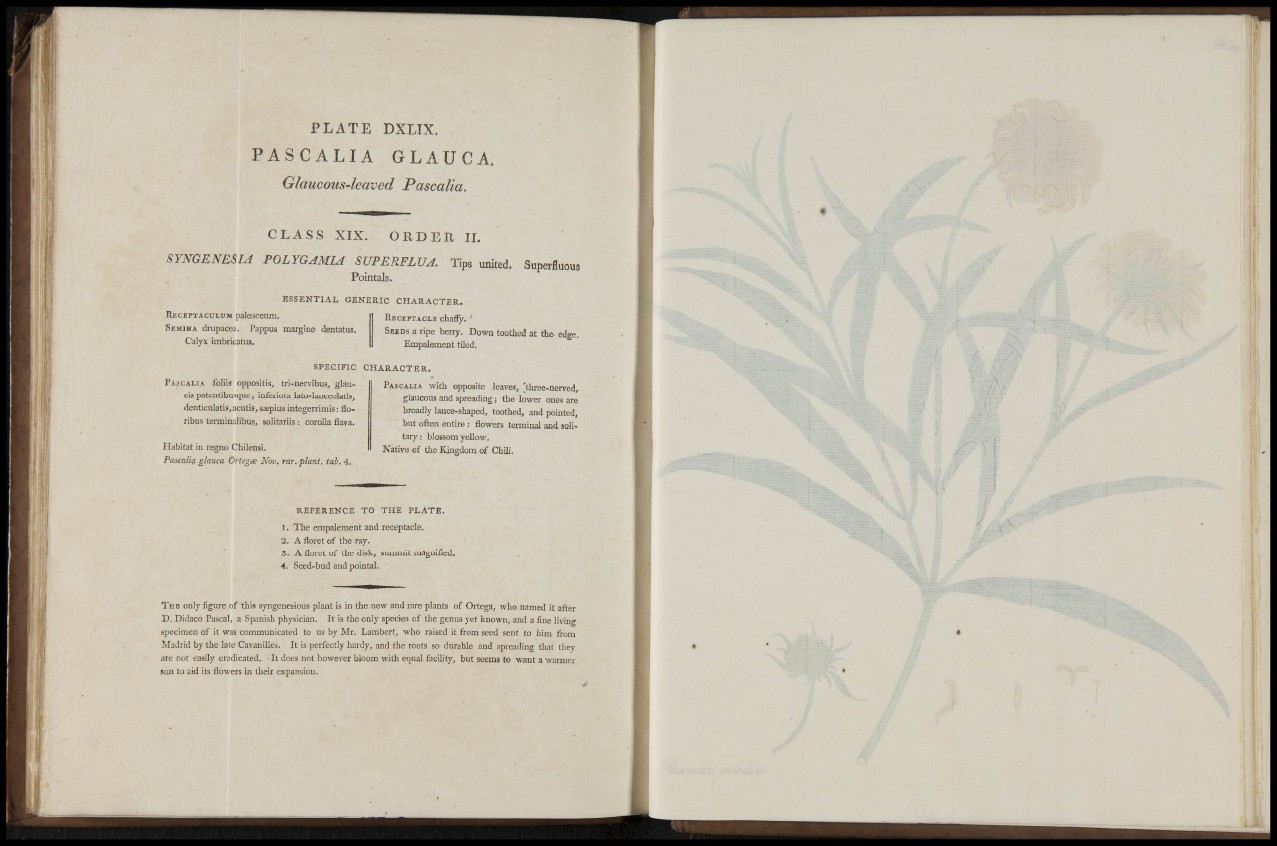
iïif
if
i 1
rs
P L A T E DXLIX,
P A S C A L I A GLAUCA.
Glaucous-leaved Pascalia.
imi
W
m
i
l i !
I
! ' iiil-fl
C L A S S XIX. ORDER II.
SYNGENESIA FOLYGAMIA SUPERFLUA Tips united. Superfluous
Pointals.
RECEPTACULUM paleaceum.
SEMINA drupacea. Pappus margine dentatus
Calyx irabricatus.
E S S E N T I A L GENERIC CHARACTER.
RECEPTACLE chafFy. '
SEEDS a ripe berry. Down toothed at th& edge.
Empalement tiled.
SPECIFIC CHARACTER.
PASCALIA foliis oppositis^ tri-nervibus, glaucis
patentibusquej inferiora lato-lanceolatis,
denticulatis,acutis, saepius integerrimis : floribus
terminalibus, solitariis : corolla flaya.
Habitat in regno Chilensi.
Pascalia glauca Orleges Kov. rar. plant, tab. 4.
PASCALIA with opposite leaves, [tliree-nerved,
glaucous and spreading; the lower ones are
broadly lance-shaped, toothed, and pointed,
but often entire : flowers terminal and solitary
: blossom yellow.
Native of die Kingdom of Chili.
REFERENCE TO THE PLATE.
1. The empalement and receptacle.
2. A floret of the ray.
3. A floret of the disk, summit magnified.
4. Seed-bud and pointal.
THE only figure of this syngenesious plant is in the new and rare plants of Ortega, who named it after
D. Didaco Pascal, a Spanish physician. It is the only species of the genus yet known, and a fine living
specimen of it was communicated to us by Mr. Lambert, who raised it from seed sent to him from
Madrid by the late Cavanilles. It is perfectly hardy, and the roots so durable and spreading that they
are not easily eradicated. It does not however bloom with equal facility, but seems to want a warmer
sun to aid its flowers in their expansion.
.J;